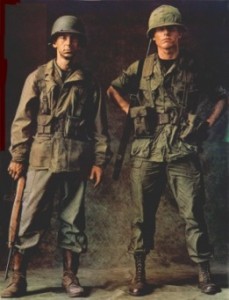 At the October meeting of the Maryland Writers Association (Howard County), John L. French, a crime scene supervisor for the Baltimore City Police Department, offered writers some tips on making their fictional crime investigations more realistic.
At the October meeting of the Maryland Writers Association (Howard County), John L. French, a crime scene supervisor for the Baltimore City Police Department, offered writers some tips on making their fictional crime investigations more realistic.
French explained that the phrase “crime scene investigation” coupled with what people see on the TV show of the same name has led a touch of confusion about what CSI do. In Baltimore City, as well as many other municipalities, the CSI staff aren’t police officers. They’re civilians who work for the police department. As such, they don’t interview witnesses, canvas the neighborhoods, or generally investigate the crime. Detectives and officers do that kind of work. While CSI folks are investigators of a sort, they are tasked with investigating only the scene and the clues it has to offer. Continue reading “Crime Scene Investigator & Author Offers Tips on Making Fictional Crimes Realistic”

 Our last episode discussed
Our last episode discussed  So, let’s say you’re interested in writing a Vietnam-era war novel. You know, something along the lines of Forrest Gump or Platoon. Most of your character’s time will be spent in the bush. So what did they wear during combat? Combat forces (all branches) were outfitted in what was called “fatigues.” They were simple OD (olive drab) uniforms that were intended to resemble foliage found in most temperate regions of the world. Soldiers would enhance their uniforms with dirt, soot, dust, mud, and sticks of foliage stuck here and there to help break up their outlines. These are the predecessors to what became BDUs (Battle Dress Uniforms). The OD duds were used in 3 wars until the BDUs replaced them.
So, let’s say you’re interested in writing a Vietnam-era war novel. You know, something along the lines of Forrest Gump or Platoon. Most of your character’s time will be spent in the bush. So what did they wear during combat? Combat forces (all branches) were outfitted in what was called “fatigues.” They were simple OD (olive drab) uniforms that were intended to resemble foliage found in most temperate regions of the world. Soldiers would enhance their uniforms with dirt, soot, dust, mud, and sticks of foliage stuck here and there to help break up their outlines. These are the predecessors to what became BDUs (Battle Dress Uniforms). The OD duds were used in 3 wars until the BDUs replaced them.  Meet Minnie. She ruled my household for the last three years of her life and here’s how she adopted me.
Meet Minnie. She ruled my household for the last three years of her life and here’s how she adopted me.